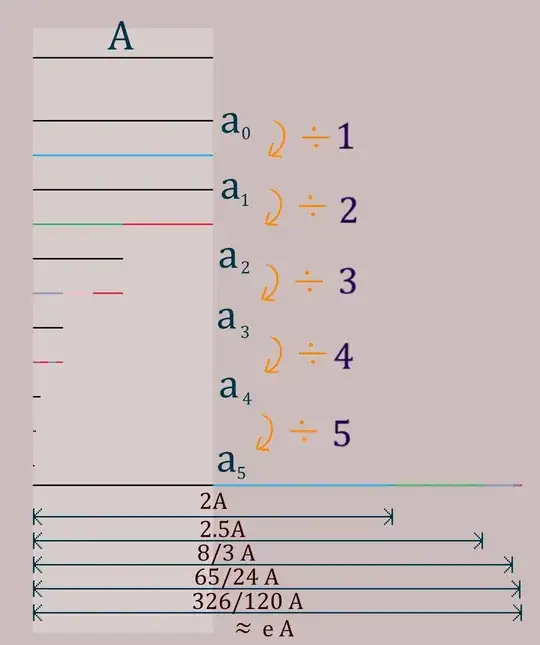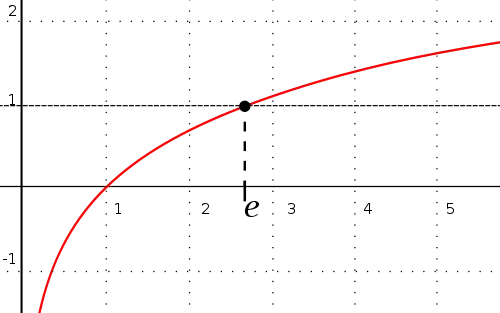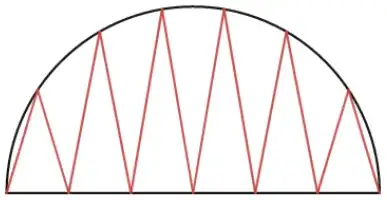EDIT: To my answer (under the line) I am gonna add pictures I have draw- I construct an aprroximation of $e$ into 5th iteration on the Number Line, where:
$$L_0=a_0=1 $$ $$L_{n+1}=L_n+a_{n+1} ; a_{n+1}=\frac{a_n}{n+1} $$
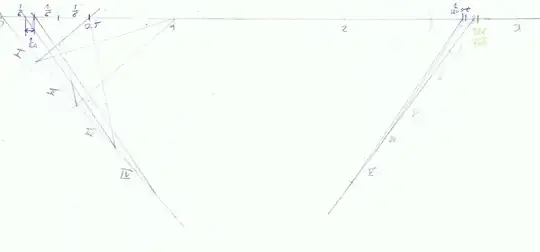 Altenative we can write:
Altenative we can write:
$$L_2=2.5 ;a_2=0.5 $$ $$L_{n+1}=L_n+a_{n+1} ; a_{n+1}=\frac{a_n}{n+1}
$$
Here I tried to approximate between $[2;3]$ (into 6th step):
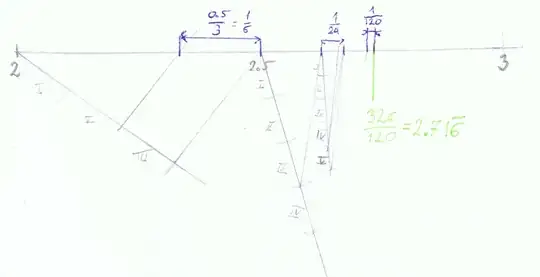
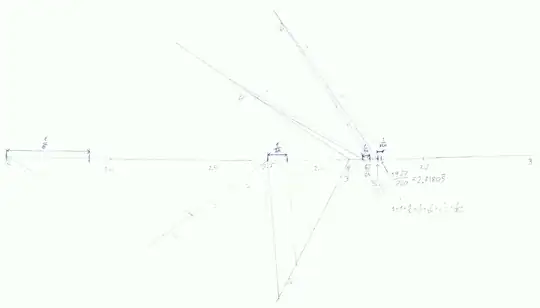
Old Answer:
---Introduction---
A) We gonna use the Taylor series for $e$ and multiply by $A$:
$e=1+\frac{1}{1!}+\frac{1}{2!}+\frac{1}{3!}+\frac{1}{4!}+...=1+\frac{1}{1}+\frac{1}{1*2}+\frac{1}{1*2*3}+\frac{1}{1*2*3*4}+...$
$Ae=A(1+\frac{1}{1}+\frac{1}{1*2}+\frac{1}{1*2*3}+\frac{1}{1*2*3*4}+...)$
In special case: $A=1$ (leght unit)
We can lead $Ae$ to this form:
$Ae=A(1+\frac{1}{1}(1+\frac{1}{2}(1+\frac{1}{3}(1+\frac{1}{4}(1+...)...)...)$ (Formula 1)
B) Optional: How a line segment can be devide via ruler and compass: Intercept theorem
C) (Formula 1) will be explained as an Algorithm plus picture .
---The Algorithm---
Short :
Start:
- Have a line segment $a_0$ with a length of $A$ .
Loops:
I) Duplicate $a_{n-1}$ and divide the new segment into $n$ equal parts. Pick one element as $a_n$.
II) Add $a_{n-1}$ to the older line segments:
$L_{n-1}=a_{n-1}+\displaystyle\sum_{i=0}^{n-2}a_i$
Long :
- Have a line segment $a_0$ with a length of $A$ .
1.1. Duplicate $a_0$ and divide the new segment into $1$ equal parts .
1.2. Pick one element as $a_1$.
1.3. Add $a_0$ to the older line segments: $L_0=a_0$
2.1. Duplicate $a_1$ and divide the new segment into $2$ equal parts .
2.2. Pick one element as $a_2$.
2.3. Add $a_0$ to the older line segments: $L_1=a_1+a_0$
3.1. Duplicate $a_2$ and divide the new segment into $3$ equal parts .
3.2. Pick one element as $a_3$.
3.3. Add $a_2$ to the older line segments: $L_2=a_2+a_1+a_0$
.
.
.
n.1. Duplicate $a_{n-1}$ and divide the new segment into $n$ equal parts .
n.2. Pick one element as $a_n$.
n.3. Add $a_{n-1}$ to the older line segments: $L_{n-1}=a_{n-1}+(a_{n-2}+...+a_2+a_1+a_0)$
---Picture---
